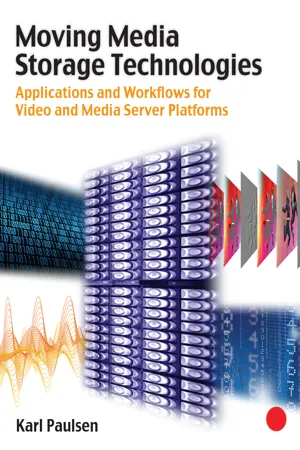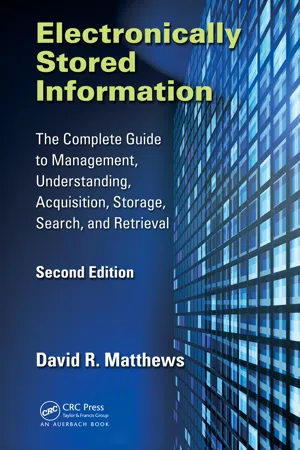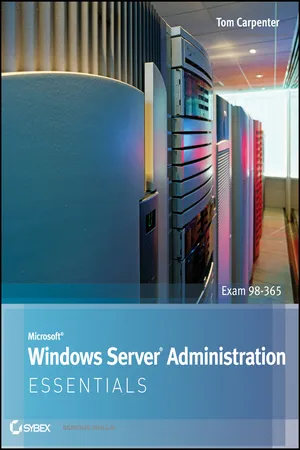Computer Science
Solid State Storage
Solid state storage refers to a type of computer storage that uses solid state drives (SSDs) to store data. Unlike traditional hard disk drives (HDDs), solid state storage has no moving parts, which results in faster data access and improved reliability. It is commonly used in modern computing devices such as laptops, desktops, and servers due to its speed and durability.
Written by Perlego with AI-assistance
Related key terms
3 Key excerpts on "Solid State Storage"
- eBook - ePub
Moving Media Storage Technologies
Applications & Workflows for Video and Media Server Platforms
- Karl Paulsen(Author)
- 2012(Publication Date)
- Routledge(Publisher)
ca . 2008–2009), and the storage size of memory modules began to grow, the implementation of SSD systems began to increase.SSD may stand for either solid state disk or solid state drive. Purists would argue that it cannot be a disk because that would assume it has a form of “disk” media that spins. Perhaps, it is assumed that because SSD is evaluated in competitive terms against the HDD, and depending upon the system, may use the same SAS, SATA, or Fibre Channel storage interfaces, that the SSD really is not just a disk—more appropriately it is a drive.Regardless, this chapter will look at the SSD as a formidable type of storage, one that offers many advantages to magnetic or optical spinning disk storage systems, not the least of which is power consumption, reduction of access time, and resistance to shock.Irrespective of SSD’s advantages and capabilities, which are covered in this chapter, a looming question still remains: As the storage industry takes a hard look at cost-control and its environmental ecosystems, just how soon will the move to SSD accelerate for enterprise level implementations?KEY CHAPTER POINTS• An overview, history, and development of flash memory, which is the media form utilized in solid state disks• The components, cell structure, and operations of flash memory• Outlining the values and the limitations of flash memory• The designations, applications, and differences between NOR and NAND memories• How data protection and security are handled in solid state disks• Applications for flash memory and the components in a solid state diskSolid State Storage Evolution
In an era of increasing file sizes, megalith-like storage requirements, rotational disk drive capacities exceeding terabyte proportions, and an astounding dependence upon storage in dimensions previously unobtainable comes a restoration of a nearly lost technology—solid state memory for mass storage. - eBook - ePub
Electronically Stored Information
The Complete Guide to Management, Understanding, Acquisition, Storage, Search, and Retrieval, Second Edition
- David R. Matthews(Author)
- 2017(Publication Date)
- Auerbach Publications(Publisher)
These can be hugely important resources for archival data and should definitely be considered when you are thinking about where data might live. But as mentioned earlier, they can be corrupted or worn out, so again they may require specialists to recover data from them.Finally, we come to the type of storage that is fast becoming the norm: solid-state or flash memory. This type of memory has been around for a long time in places like the BIOS chip on the motherboard of a computer, or in those small SD cards used in cameras.This technology has evolved as well and many of the new smart phones, tablets, laptops, and so on, are now using this type of storage because it is fast, small, lightweight, and uses less energy and generates less heat than conventional mechanical storage.Flash or solid-state memory uses a technology known as EEPROM, which stands for electronically erasable programmable read-only memory.* This means that there are no moving parts and it stores data by changing the state of the many electronic transistors to represent either a one or a zero. The data are read-only, but the device can be electronically erased and then reprogrammed with new data.USB flash drives are perhaps the best-known use of this storage technology today, but as noted earlier, it is used extensively and is becoming very popular.Forensically gathering data from one of these drives can be a challenge because when they are “erased” there is nothing left behind as there is on a mechanical hard disk or floppy disk drive. There are no telltale traces or pieces of data that can be patched together to try to find deleted or corrupted data. When a flash drive is “flashed,” it is completely wiped clean in preparation for more data.In recent evolutions of this technology it is possible to erase parts of the data and preserve parts without completely wiping the entire device, but the data that are wiped are still unrecoverable unless stored in another location.That is why many of the newer devices such as smart phones and tablets rely on online or cloud storage as a way to back up and recover their data. Often those archives of data are the only recourse if you have a device using solid-state memory storage that is corrupted or erased. Keep this in mind if you need data from one of these new devices, and be ready to find the backup resource if necessary. - Tom Carpenter(Author)
- 2011(Publication Date)
- Sybex(Publisher)
You need to understand several different technologies so that you can plan and implement storage solutions for Windows servers. First, you must understand the physical devices used for storage, primarily hard drives. Second, you should understand the way in which data is stored on these hard drives, which means you need to understand file systems. Finally, you should understand the technologies, such as Distributed File System and network storage mechanisms, that utilize hard drives and file systems. The primary focus of this section is on defining these concepts. A later section, titled “Identifying Storage Technologies,” will provide more detail on specific hard drive types and network storage types.Selecting Hard Drives for Your NetworkHard drives (or hard disks) provide nonvolatile storage of data. Volatile storage loses all data when power is removed. Nonvolatile storage retains data even if power is removed. Volatile storage includes:Nonvolatile storage allows data to be retained when power is removed.System RAMThe internal memory of a computerNonvolatile storage includes:Video RAMThe memory used for video processingHard DrivesThe internal and external disks with large storage capacityFlash DrivesAn external drive that is typically a USB drive with small to medium storage capacityNVRAMThe internal storage chips used for system BIOS settingsTraditional hard drives use moving platters for data storage. These platters are simply spinning disks used to store the actual data. Such a device consists of a motor, spindle, platters, read/write heads, and electronics. The motor spins the spindle so that the read/write heads can read and write data from and to the platters. The electronics include a printed circuit board (PCB) and various chips for drive operations. Some drives have all of the electronics integrated and others rely on controllers to send commands to the drive for normal operations.Solid State DrivesNewer technology, called solid state drive
Learn about this page
Index pages curate the most relevant extracts from our library of academic textbooks. They’ve been created using an in-house natural language model (NLM), each adding context and meaning to key research topics.


